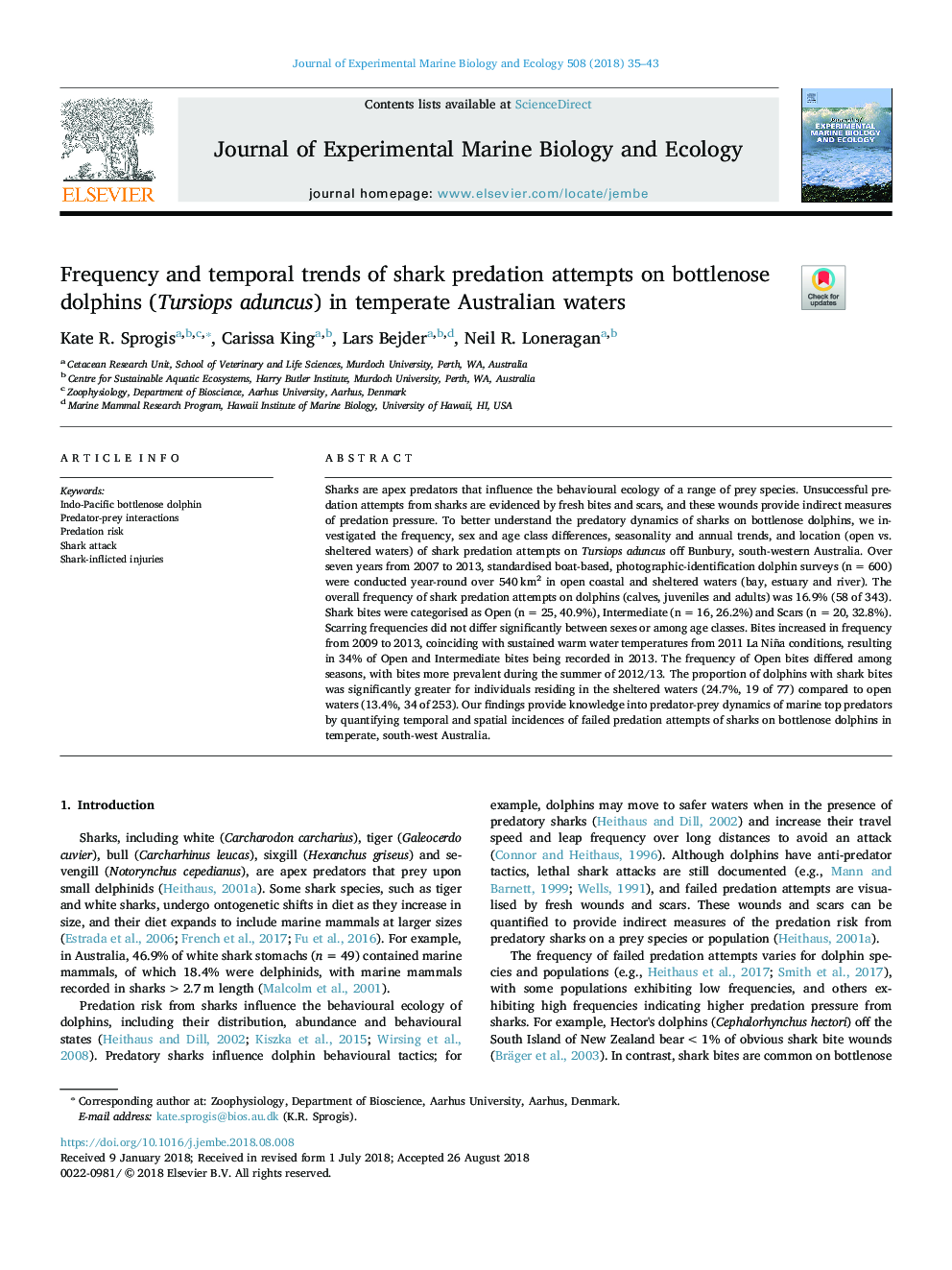| Article ID | Journal | Published Year | Pages | File Type |
|---|---|---|---|---|
| 10138348 | Journal of Experimental Marine Biology and Ecology | 2018 | 9 Pages |
Abstract
Sharks are apex predators that influence the behavioural ecology of a range of prey species. Unsuccessful predation attempts from sharks are evidenced by fresh bites and scars, and these wounds provide indirect measures of predation pressure. To better understand the predatory dynamics of sharks on bottlenose dolphins, we investigated the frequency, sex and age class differences, seasonality and annual trends, and location (open vs. sheltered waters) of shark predation attempts on Tursiops aduncus off Bunbury, south-western Australia. Over seven years from 2007 to 2013, standardised boat-based, photographic-identification dolphin surveys (nâ¯=â¯600) were conducted year-round over 540â¯km2 in open coastal and sheltered waters (bay, estuary and river). The overall frequency of shark predation attempts on dolphins (calves, juveniles and adults) was 16.9% (58 of 343). Shark bites were categorised as Open (nâ¯=â¯25, 40.9%), Intermediate (nâ¯=â¯16, 26.2%) and Scars (nâ¯=â¯20, 32.8%). Scarring frequencies did not differ significantly between sexes or among age classes. Bites increased in frequency from 2009 to 2013, coinciding with sustained warm water temperatures from 2011 La Niña conditions, resulting in 34% of Open and Intermediate bites being recorded in 2013. The frequency of Open bites differed among seasons, with bites more prevalent during the summer of 2012/13. The proportion of dolphins with shark bites was significantly greater for individuals residing in the sheltered waters (24.7%, 19 of 77) compared to open waters (13.4%, 34 of 253). Our findings provide knowledge into predator-prey dynamics of marine top predators by quantifying temporal and spatial incidences of failed predation attempts of sharks on bottlenose dolphins in temperate, south-west Australia.
Related Topics
Life Sciences
Agricultural and Biological Sciences
Aquatic Science
Authors
Kate R. Sprogis, Carissa King, Lars Bejder, Neil R. Loneragan,
